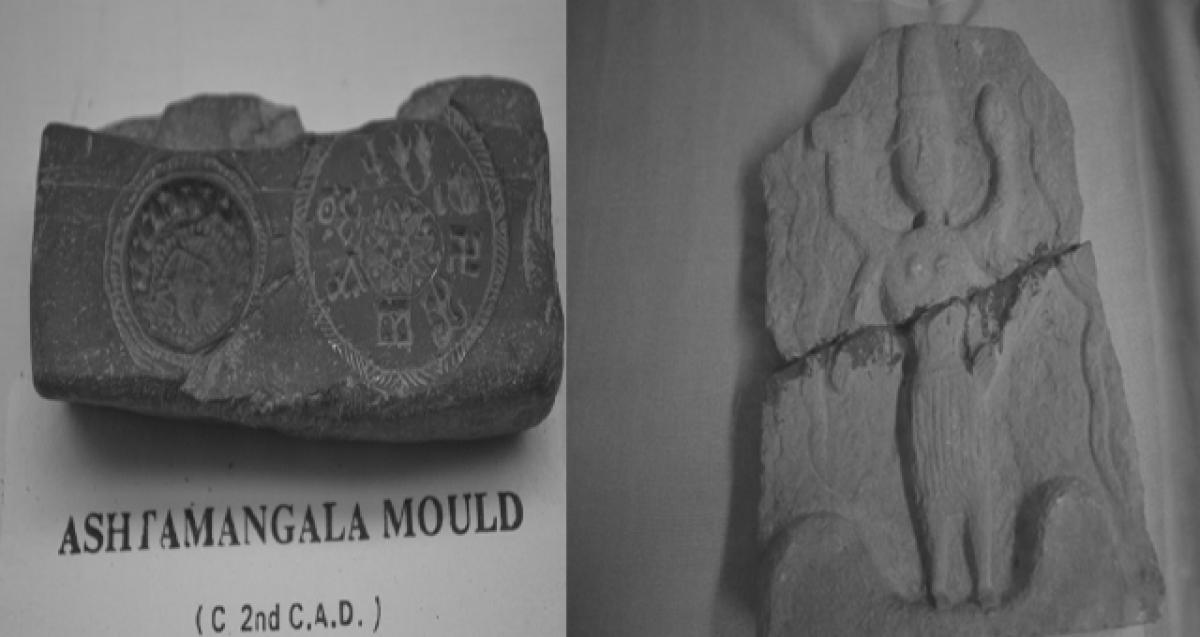Live
- Hyderabad Saree Festival 2024 kicks off in a grand manner
- Speed up Veligonda project works, CPM urges govt
- 10 career opportunities with a public policy degree
- TG Medical Council cracks whip on fake doctors
- TTD takes up mammoth waste management exercise
- Celebrating the power of communication
- Standing at work can actually be detrimental to BP
- Adani US bribery case reaches SC
- Prez, PM to address special event to mark Constitution Day
- I owe every film of mine to Vijay Sethupathi: Eashvar Karthic
Just In

Among other things, its exhibits throw light on the roots of Buddhism among the people of the Telangana region during the era of the Satavahana dynasty, which ruled for more than 4 centuries between 2nd century BC and 3rd century AD.
Sangareddy: The Kondapur Archaeological Museum is one of the priceless repositories of exciting finds assembled from rare sites of excavation in India. The beauty of the museum is that it reflects the life and times of the people of ancient Telangana region.
Among other things, its exhibits throw light on the roots of Buddhism among the people of the Telangana region during the era of the Satavahana dynasty, which ruled for more than 4 centuries between 2nd century BC and 3rd century AD.
The exhibits in the museum include finds retrieved from an ancient mound, locally known as ‘Kotagadda’, which is located close to the museum.
The first excavation of the eighty-acre piece of land, where primitive fort/village of the Satavahana kingdom once thrived, was done in the early 19thcentury by the famous archaeologist Henry Cousens. During the Nizam’s rule, it was again excavated a few times, mainly in the 1940s.
After the area came under the administrative control of the Archaeological Survey of India in 1952, once again excavation was done. One would be surprised to learn that in the past century, only two acres of land has been excavated out of the vast area.
The artifacts retrieved from the two acres include early historic pottery, Buddhist sthupas on rock panels, terracotta figurines made of mud and sandstone, bangles and beads and many other invaluable pieces of art that have amazed tourists from across the globe who throng the museum every year.
What one can feel is the Buddhist influence on the people who once lived in the region, which now comprises much of Telangana. Every piece of pottery, terracotta figurines or sculptures retrieved from the excavated site reveals illuminating information about the people who lived during the period; their habits, art, beliefs, architecture and their way of life.
Every minute detail, be it a piece of ornament worn by a figurine or the shape of the body, describes something about the person in the figurine or a sculpture.
This ancient settlement of the Satavahana Dynasty was situated between the Manjeera and Musi rivers, which have been flowing on this gifted land since time immemorial. This was the period when both Buddhism and Jainism thrived in the Deccan,

© 2024 Hyderabad Media House Limited/The Hans India. All rights reserved. Powered by hocalwire.com







